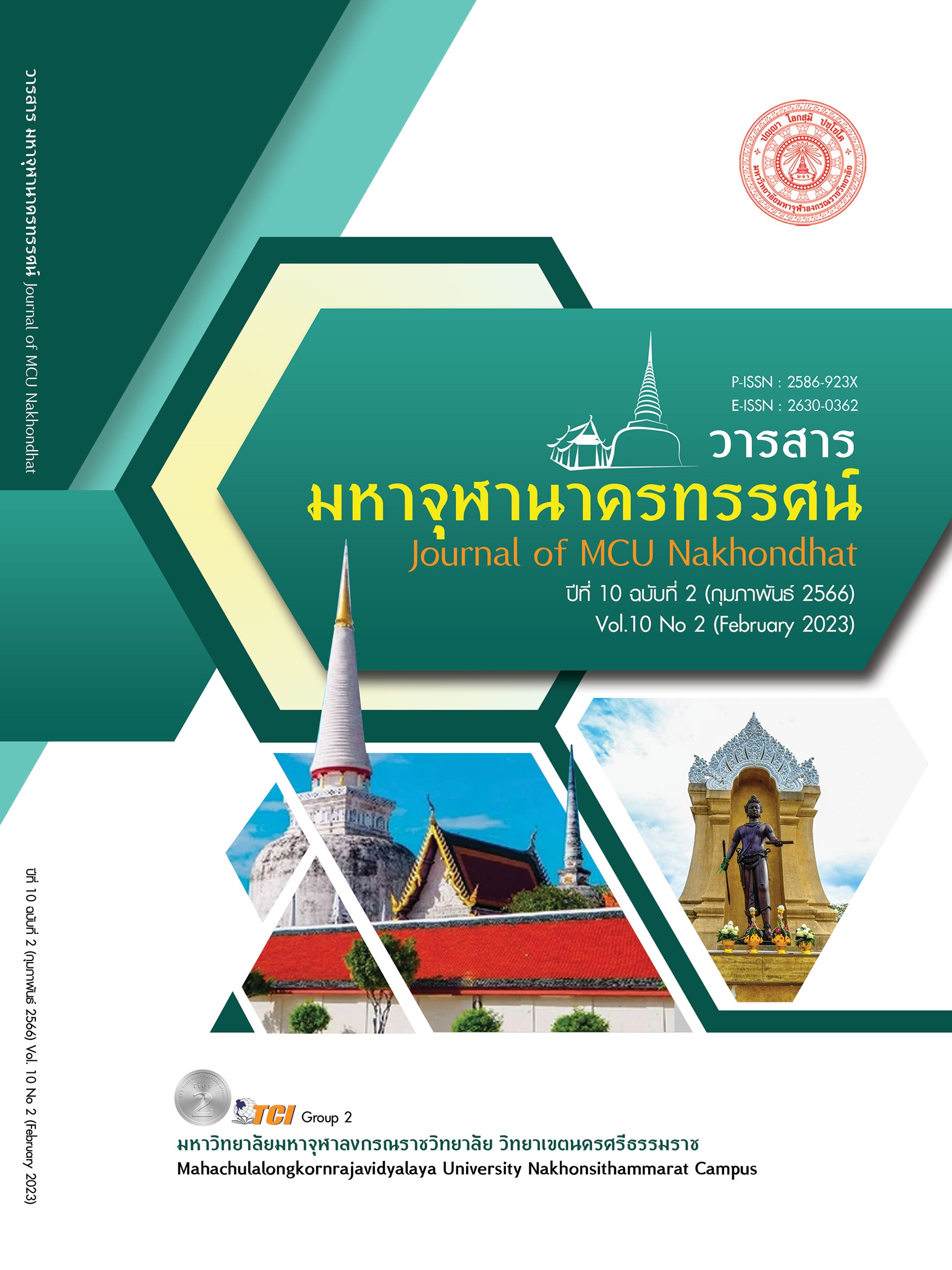MEDIA AND LOSS OF MEANING OF TRUTH IN POST-TRUTH ERA: NEWS TALK TELEVISION PROGRAMS
Main Article Content
Abstract
Nowadays, the line between news programs and entertainment programs and viewing style of audiences focuses on entertainment, news storytelling programs also creates entertainment or emotion news for mainly audience. This can be seen from selection of news presented in the current news program that often selects the most emotional news no matter what kind of news. This phenomenon in which truth and facts lose their meaning spreads to scientific truth, for example in the case of the COVID-19 epidemic and the rejection of environmental scientists on global warming, etc. Being challenged and losing the meaning of scientific truth, which has been the most powerful paradigm in shaping knowledge and social truth in the last two centuries. The past is a clear sign of the coming of the world in full post-truth era. When every information, even facts that can be proven scientifically, becomes just information. What messages can be communicated that best suit emotions and beliefs of the recipients that message will become the reality of receiver. The results of the literature reviews analyze process of News Talk Television Programs in Post-truth era and oversight of government as a guideline for analyzing the work of other media. According to phenomenon of loss of meaning of truth, an important factor is the emergence of social media that can overcome traditional communication barriers and provide new communication channels for those who have never had space for expression their own attitude before. This article presents an analysis of media performance in television news storytelling in post-truth era as a guideline for analyzing the work of other media channels in the post-truth era.
Article Details

This work is licensed under a Creative Commons Attribution-NonCommercial-NoDerivatives 4.0 International License.
References
ชลาลัย ปั้นสนธิ และกิตติมา ชาญวิชัย. (2556). การทําหน้าที่สื่อมวลชนของรายการเล่าข่าว: กรณีศึกษาสถานีโทรทัศน์ไทยทีวีสี ช่อง 3. วารสารบริหารธุรกิจ เศรษฐศาสตร์และการสื่อสาร, 8(2), 55-66.
ทินณภพ พันธะนาม. (2562). ทัศนคติของผู้ชมที่มีต่อรายการคุยข่าว เพื่อสร้างกลยุทธ์การทำรายการ. วารสารนิเทศศาสตร์ปริทัศน์, 23(1), 323-333.
ธวัลรัตน์ ศรีจันทร์กาศและคณะ. (2564). คุณลักษณะที่ส่งผลต่อความน่าเชื่อถือของผู้ประกาศข่าว ในรายการประเภทเล่าข่าวทางสถานีโทรทัศน์. วารสารนิเทศศาสตร์ มสธ, 10(2), 39-49.
พัชราภา เอื้ออมรวนิช. (2562). สื่อสังคมออนไลน์ แหล่งข่าวยุคดิจิทัล. วารสารอิเล็กทรอนิกส์การเรียนรู้ทางไกลเชิงนวัตกรรม, 9(2), 1-9.
สุภาวดี หมื่นเจริญ. (2560). การเลือกประเด็นบทบาทหน้าที่และจริยธรรมของสื่อมวลชนในยุคดิจิทัลประเภทรายการข่าวโทรทัศน์. ใน ปริญญามหาบัณฑิต สาขาวิชาการสื่อสารการตลาดดิจิทัล. มหาวิทยาลัยกรุงเทพ.
Barrera, et al. (2020). Facts, alternative facts, and fact checking in times of post-truth politics. Journal of Public Economics, (182), 1-19.
Binczyk, E. (2019). The most unique discussion of the 21st century? The debate on the Anthropocene pictured in seven points. The Anthropocene Review, 6(1–2), 3–18.
Cinelli et al. (2020). The echo chamber effect on social media. PNAS, 118(9), 1-15.
Edgerly, S. (2017). Making Sense and Drawing Lines. Journalism Studies, 18(8), 1052-1069.
Flanagin, A. J.,et al. (2000). Perceptions of Internet Information Credibility. Journalism & Mass Communication Quarterly, 77(3), 515–540.
Harmon-Jones et al . (2020). Novel Modes of Dissonance Reduction: Justification of Support for Donald Trump. PsyArXiv Preprint, 56(8), 1-22.
Hartanto et al. (2020). Progressive view on social justice: Netizen opinions about social justice warrior. Psikohumaniora: Jurnal Penelitian Psikologi, 5(1), 107-120.
Iyengar, S., et al. (2018). Scientific communication in a post-truth society. PNAS, 116(16), 7656-7661.
Journell, W. . (2017). Fake News, Alternative Facts, and Trump: Teaching Social Studies in a Post-Truth Era. Social Studies Journal, 37(1), 8-21.
Kessler et al. (2021). Trump’s false or misleading claims total 30,573 over 4 years. Retrieved August 26, 2022, from https://www.washingtonpost.com/politics/ 2021/01/24/trumps-false-or-misleading -claims-total-30573-over-four-years/
Kramer, E. (2016). When news becomes entertainment: Representations of corruption in Indonesia’s media and the implication of scandal. Media asia, 40(1), 60-72.
Lewandowsky et al. (2017). Beyond Misinformation: Understanding and Coping with the “Post-Truth” Era. Journal of Applied Research in Memory and Cognition, 6(4), 353-369.
Lind, D. (2016). Donald Trump lies. All the time. And a stunning number of people don't seem to care. Retrieved August 26, 2022, from https://www.vox.com /policy-and-politics/2016/9/26/13016146/donald-trump- liar-media
Mahmood et al. (2016). Social Media and Protest Behavior. PUTAJ – Humanities and Social Sciences, 23(2), 201-214.
Senk, A. . (2022). Balanced entertainment: motivations behind watching cable news. In Dusadee Niphonthesis Major. Journalism of University of Missouri.
Sismondo, S. (2017). Post-truth? Social Studies of Science, 47(1), 3–6.
Steinmetz, K. (2016). Oxford's Word of the Year for 2016 Is 'Post-Truth. Retrieved August 26, 2022, from https://time.com/4572592/oxford-word-of-the-year-2016-post-truth/
Strong, S. I. (2017). Alternative Facts and the Post-Truth Society: Meeting the Challenge. PENN LAW REVIEW, 165, 137-146.
Sundar et al. (2021). Seeing Is Believing: Is Video Modality More Powerful in Spreading Fake News via Online Messaging Apps? Journal of Computer-Mediated Communication, 26(6), 301–319.
Todd, C . (2015). COMMENTARY: GamerGate and resistance to the diversification of gaming culture. Women’s Studies Journal, 29(1), 64-67.
Valenzuela, S. (2013). Unpacking the Use of Social Media for Protest Behavior: The Roles of Information, Opinion Expression, and Activism. American Behavioral Scientist, 57(7), 920–942.
Verweij, P. (2009). Making Convergence Work in the Newsroom: A Case Study of Convergence of Print, Radio, Television and Online Newsrooms at the African Media Matrix in South Africa During the National Arts Festival. Convergence : The International Journal of Research Into New Media Technologies, 15 (7) , 75–87.


